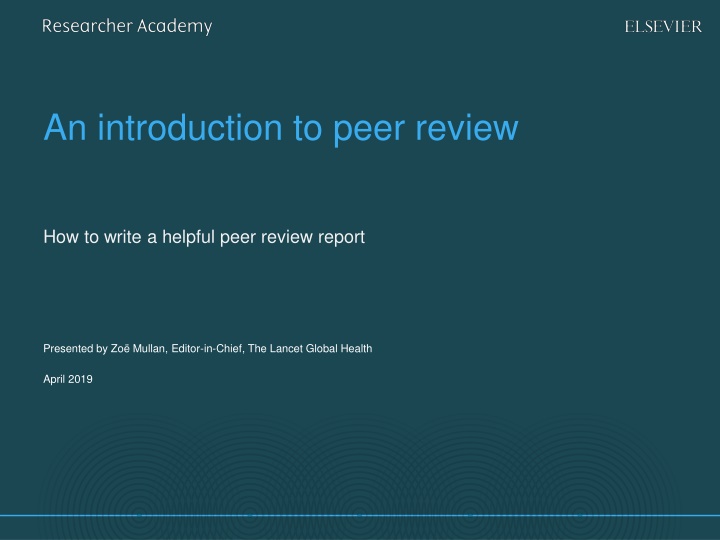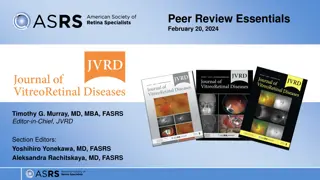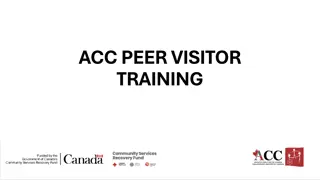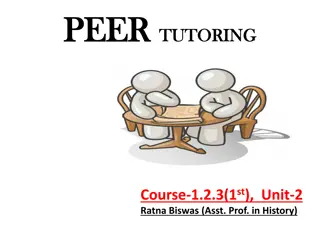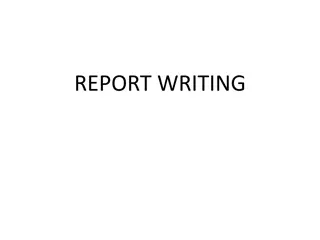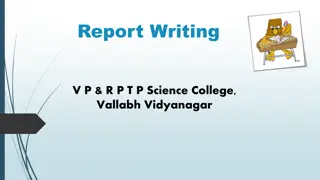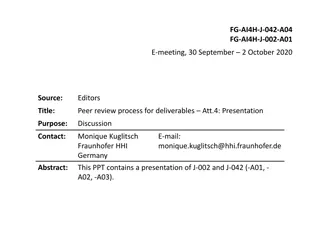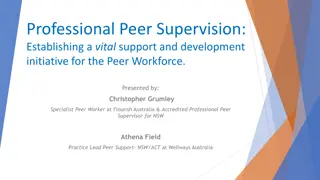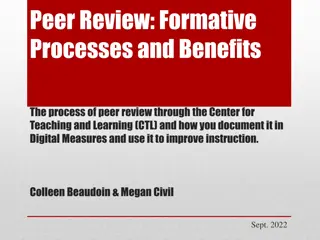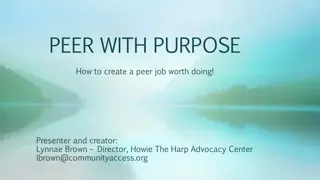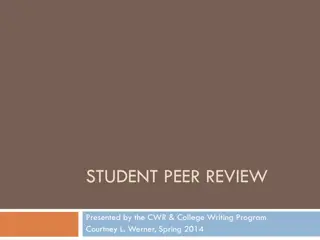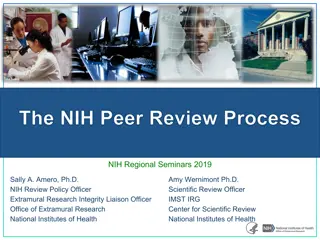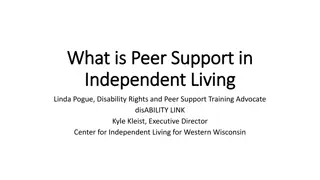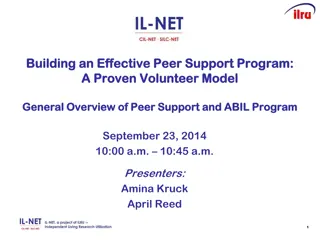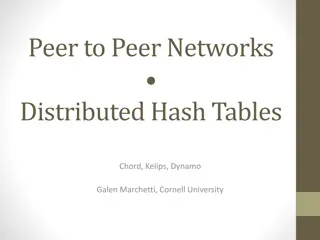Mastering the Art of Writing Helpful Peer Review Reports
Learn the essential elements of writing a constructive peer review report from Zo Mullan, Editor-in-Chief of The Lancet Global Health. Understand the general considerations, checklists, and guidelines to follow. Discover tips on maintaining professionalism, objectivity, and specificity while providing feedback to authors.
Download Presentation

Please find below an Image/Link to download the presentation.
The content on the website is provided AS IS for your information and personal use only. It may not be sold, licensed, or shared on other websites without obtaining consent from the author.If you encounter any issues during the download, it is possible that the publisher has removed the file from their server.
You are allowed to download the files provided on this website for personal or commercial use, subject to the condition that they are used lawfully. All files are the property of their respective owners.
The content on the website is provided AS IS for your information and personal use only. It may not be sold, licensed, or shared on other websites without obtaining consent from the author.
E N D
Presentation Transcript
An introduction to peer review How to write a helpful peer review report Presented by Zo Mullan, Editor-in-Chief, The Lancet Global Health April 2019
About the speaker Zo Mullan Editor in Chief The Lancet Global Health, London, UK | zoe.mullan@lancet.com | 2
Contents Section 3.1: How to write a helpful peer review report comments to authors a. General considerations b. Checklists and guidelines c. Overall structure d. Section by section | 3
General considerations DO Be professional and courteous Be objective, constructive, and specific Read the whole paper before starting (including appendices) Follow the journal s guidelines Be consistent with your confidential comments to editors Remember that the purpose is to assist the authors in improving the paper DO NOT Write anything you would not be happy to receive yourself Line-by-line edit the paper (copy editors do that) Ask the authors to include references to your own work unless absolutely necessary Request additional analyses/experiments unless they are essential to support claims made in the current manuscript | 4
Checklists and guidelines Check the article type against journal information: Seminars are disease-oriented clinically focused overviews for the generalist, covering epidemiology, pathophysiology, diagnosis, management, and prevention Not appropriate to critique novelty in this instance Refer to reporting checklists eg, CONSORT for randomised trials, PRISMA for systematic reviews Attend to any journal-specific instructions to reviewers: An outline of the conceptual advance over previously published work; A summary of the specific strengths and weaknesses of the paper; Alternative hypotheses that are consistent with the available data | 5
Overall structure Initial paragraph(s): a succinct overview of the paper as you interpreted it, with thoughts on its contribution to the field as a whole and a top-level summary of strengths and weaknesses Questions to consider: Does the study add to current knowledge? Does it challenge existing paradigms? Does it matter? The current study is on a topic of relevance and general interest to the readers of the journal. I found the paper to be overall well written and felt confident that the authors performed careful and thorough field and spectral processing. The design of the field campaign combined with several micro-met stations makes the dataset seem quite useful. However, the description of some very important points were inadequate or completely missing. I have very little confidence in one important analysis, and came away with too many questions to be able to recommend this paper without major revision. | 6
Overall structure Major comments fundamental to the understanding of the current paper Start with most concerning issues and work down or Critique in section order (ie, major comments in summary, major comments in introduction, etc) I have several significant concerns about the presentation and general results that should be addressed prior to publication. First, calibration and validation of conductance models. Ideally, I think it would be best to use separate FLUXNET forest sites for calibration and validation of the model. However, it would be acceptable to split the five sites into separate calibration and validation periods. I assume that is what the authors have done, but this is not explicitly stated. The calibration and validation should be done using different time periods that are explicitly stated. | 7
Overall structure Minor comments confusing sentences, badly drawn figures, incorrect references, technical clarifications Line 141: What does the residue represent? Line 352: Please add the range of estimation uncertainty (eg, 95% confidence interval) to the trend. Fig. 4, lines 382-388. Something does not seem correct here. The description in the text does not seem to match the figure. | 8
Section by section Introduction Is the research question clearly stated? Is a coherent case made for why the research question is important? Are the most relevant pieces of previous work cited? Methods Have the methods been described clearly enough to allow others to repeat them? Are they the most appropriate way to answer the research question? If humans or animals were involved, is ethics approval reported and in your opinion is the research ethical? Is informed consent necessary and reported? | 9
Section by section Results Are results reported for all experiments/analyses described in the Methods? Are any results reported for which methods have not been described? Are they presented clearly and consistently (eg, do the figures and text match up)? Discussion Does the interpretation reasonably reflect the results or have the authors gone beyond the data ? Are the potential limitations presented? If not, point them out. Do the results conflict with those of other researchers and have potential explanations been proposed? Has the research question been answered? Have the authors summed up what the findings mean in the grand scheme of things ? | 10
Section by section Title and abstract Does the title accurately reflect the research question and study type? Does the abstract contain the aim of the study and the most important methodological details? Are the findings reported in the abstract a faithful representation of those reported in the main text? Is anything presented in the summary that wasn t described in the main paper? Is the conclusion justified by the data presented? Are the implications for future work stated? | 11
Summary Be professional and courteous Read the whole paper and refer to guidelines before writing anything Structure your report: (1) Summary of strengths, weaknesses, and overall contribution (2) Major comments (3) Minor comments Remember that the goal is to advance knowledge | 12
Thank you Ask your questions on: Researcher Academy Mendeley group Follow us on Twitter
